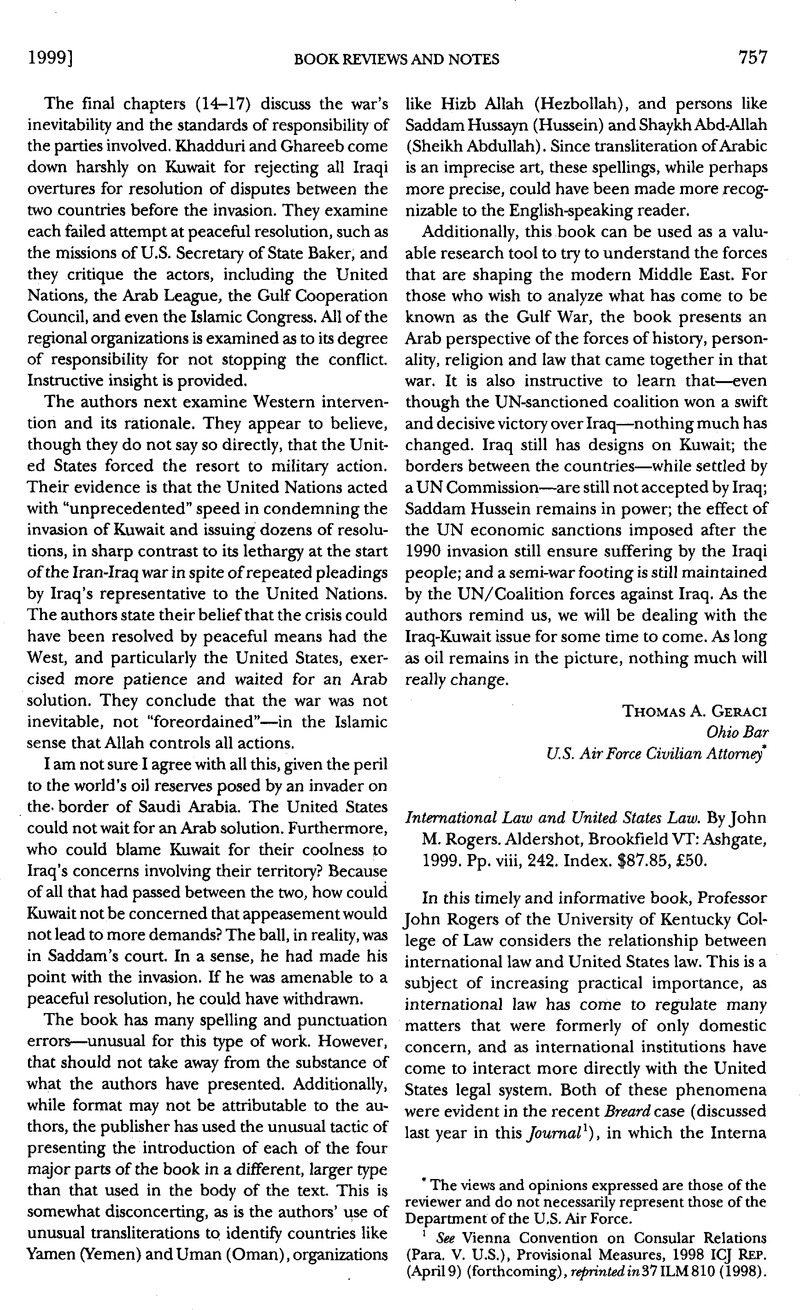No CrossRef data available.
Article contents
International Law and United States Law. By John M. Rogers. Aldershot, Brookfield VT: Ashgate, 1999. Pp. viii, 242. Index. $87.85, £50.
Published online by Cambridge University Press: 27 February 2017
Abstract

- Type
- Book Reviews and Notes
- Information
- Copyright
- Copyright © American Society of International Law 1999
References
1 See Vienna Convention on Consular Relations (Para. V. U.S.), Provisional Measures, 1998 ICJ Rep. (April 9) (forthcoming), reprinted in 37 ILM 810 (1998). For discussion of this case, see Jonathan I. Charney & W. Michael Reisman, Agora: Breard, 92 AJIL 666 (1998); see also Curtis A. Bradley, Breard, Our Dualist Constitution, and the Internationalist Conception, 51 Stan. L. Rev. 529 (1999).
2 See Charney & Reisman, supra note 1, at 666. The Supreme Court declined to stay the execution, see Breard v. Greene, 118 S. Ct. 1352 (1998), and Mr. Breard subsequently was executed.
3 630 F. 2d 876 (2d Cir. 1980). The court in Filartiga held that the Alien Tort Statute gives the federal courts jurisdiction over suits between aliens concerning violations of international human rights law occurring outside the United States.
4 His discussion in this part of the book is drawn to some extent from an earlier article. See John M. Rogers, The Alien Tort Statute and How Individuals “Violate” International Law, 21 Vand.J. Transnat’l L. 47 (1988).
5 See 28 U.S.C. §1350 (1994).
6 See Louis Henkin, Foreign Affairs and the United States Constitution (2d ed. 1996), rev. ed. of Louis Henkin, Foreign Affairs and the Constitution (1972). Another book with similar coverage is Jordan J. Paust, International Law as Law of the United States (1996). That book, however, is essentially just a collection of prior articles, and its extremely heavy footnoting limits its accessibility.
7 175 U.S. 677 (1900).
8 For a description of these changes in customary international law, see Curtis A. Bradley & Jack L. Goldsmith, Customary International Law as Federal Common Law: A Critique of the Modern Position, 110 Harv. L. Rev. 815, 838–42 (1997). For a more general account of changes in international law, see Paul B. Stephan, The New International Law—Legitimacy, Accountability, Authority, and Freedom in the New Global Order, 70 U. Colo. L. Rev. 1555 (1999).
9 389 U.S. 429 (1968).


